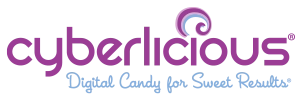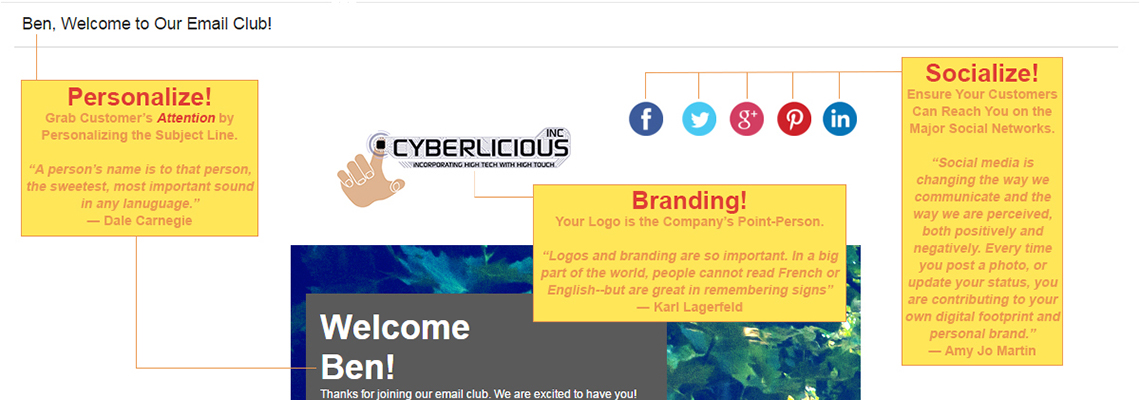So, you want to create a newsletter? Fantastic!
Email lists are by far your most valuable commodity when it comes to marketing and branding your business. By having a loyal subscriber list you can stay connected with customers, remarket to customers that may not have taken action during their first visit, update followers on news and changes in your industry, or even market to existing customers using promos and special offers via email. Follow our 10-step process on how to create an email newsletter and get your business moving in the right marketing direction.
1. Set a Goal for Your Newsletter
Are you most interested in gathering new followers? Or do you want to show off your expertise and the value of your goods and services? Or maybe you want to increase the interaction between readers and build brand awareness? Newsletters can have many goals. It is a good idea to start out by brainstorming and writing down your newsletter’s goals to help you stay focused.
2. Decide How to Measure Success
By setting benchmarks for your goals you can track data to determine where your newsletter is succeeding and which areas need improvement. For example, if you want to use the newsletter to help increase registrations for an upcoming event, what percentage increase would be considered a success? Or maybe you are interested in generating more sales for a new product launch, in this case, you would want to measure open rates and click-through rates, and set a benchmark for the number of product sales you would consider a success.
3. Create an Audience
Are you interested in a small loyal subscriber base of visitors who frequent the local food truck rally? Or maybe you want a large subscriber base of people all across the nation who love tacos? Taking the time to set a target audience for your newsletter will help guide you through content creation and help generate new ideas.
4. Choose an Email Marketing Automation Program
There are many free and affordable email marketing software programs available for small and large businesses. Read more about our favorite email marketing program. First and foremost, you want a program that gathers data. How many people opened your email, read it, clicked embedded links, took action, or made a purchase? You will also want the email program you choose to be able to deliver large volumes of emails efficiently and successfully. Other features to consider include customizable templates, free training, subscription management, ability to segment your list into multiple categories or lists.
5. Gather Content
Consider the overall tone of your newsletter. Marketing experts advise that your newsletter should be personal and friendly. You want readers to feel as if you have been lifelong friends. Offer several sections within your newsletter for readers so you can appeal to multiple personalities. What kind of content will compose each section and how will you organize it? Each section should have a purpose and lead readers into taking action. Lastly, you will want to decide on a name and frequency for your newsletter. If you sell organic skin care products, maybe you name your newsletter “The Organicle” and send information to subscribers on a monthly basis. The sections in your newsletter would be about new products and research, news and/or changes in USDA organic regulations, and a how-to section on skincare and makeup application.
6. Choose a Template
As described in step 4, you will want to have a variety of customizable templates to choose from. Similar to your logo and branding for your business, it is important that the template of your newsletter stay the same. This way your readers will be able to navigate to/from their favorite sections easily every month. Your newsletter will be recognizable to readers and thus more engaging and encourage interaction with laser content and images.
7. Begin Writing
As described in section 5, your content should be organized into sections. These sections should offer information that appeals to multiple personalities and interests within your audience. Once you’ve decided on the layout and organization of your content, begin writing the body content that will show in your newsletter. Remember, the information in your newsletter will link back to your website where readers can read more or search for more information. Your content within each section does not have to be wordy. Short, sweet, and to the point is usually best.
8. Personalize and Legalize
Everyone loves hearing their own name! A good way to do this is either in the subject line or within the body of the content. Personalize each email by using the reader’s name to keep them engaged.
Ensure your newsletter is legally compliant by adding your business address and an easy way to unsubscribe at the end of every email. Read more about the CAN-SPAM Act.
9. Test Out Emails in Different Browsers
Once your newsletter is complete, it is important that you send test emails. During your tests, check the email in different browsers. What looks great in Gmail may not look the same in outlook, AOL mail, or yahoo. Do your due diligence by testing and opening your email in a variety of browsers before sending it out to the masses. First impressions are very important, and you want your readers to be WOWed!
10. Analyze and Track Data
Once you begin your email campaign start collecting data about your readers. Check to see how many people actually opened your email and read through the newsletter. What was the click-through rate? Did anyone unsubscribe? How many of your newsletters were filtered as spam? How many unique click-throughs did your newsletter generate? What was the bounce-back rate? How many HTML vs text versions were read?
This data will give you an indication as to how effective your content was to compel subscribers to read more. It will also help you learn what content was most valuable to your readers guiding you towards improvements that can save you time and money.
We hope our 10 simple steps help get you and your business connecting and staying in touch with your client base! Contact us today for more information on how to create a newsletter.

